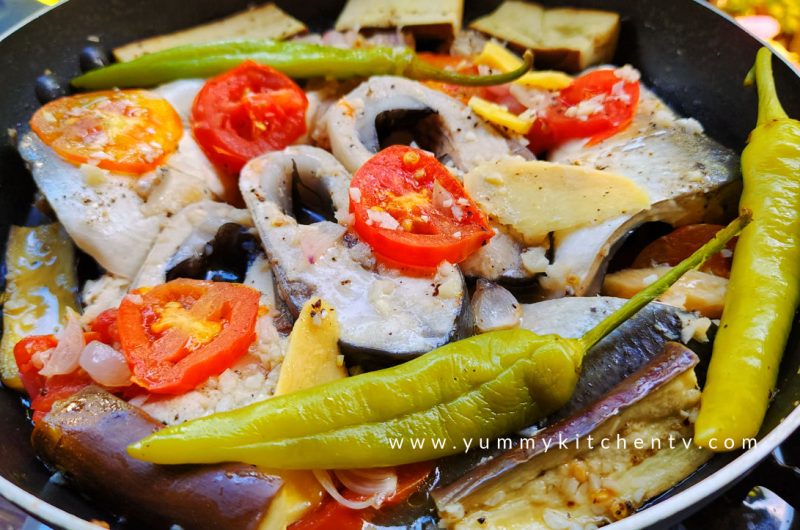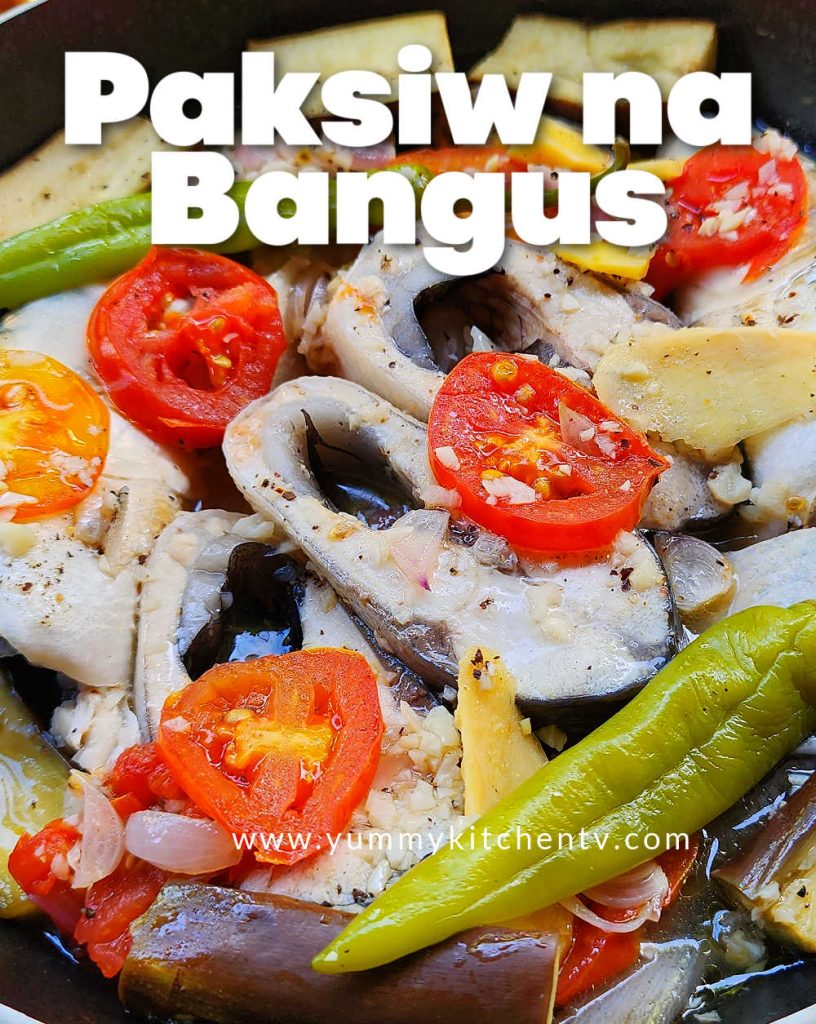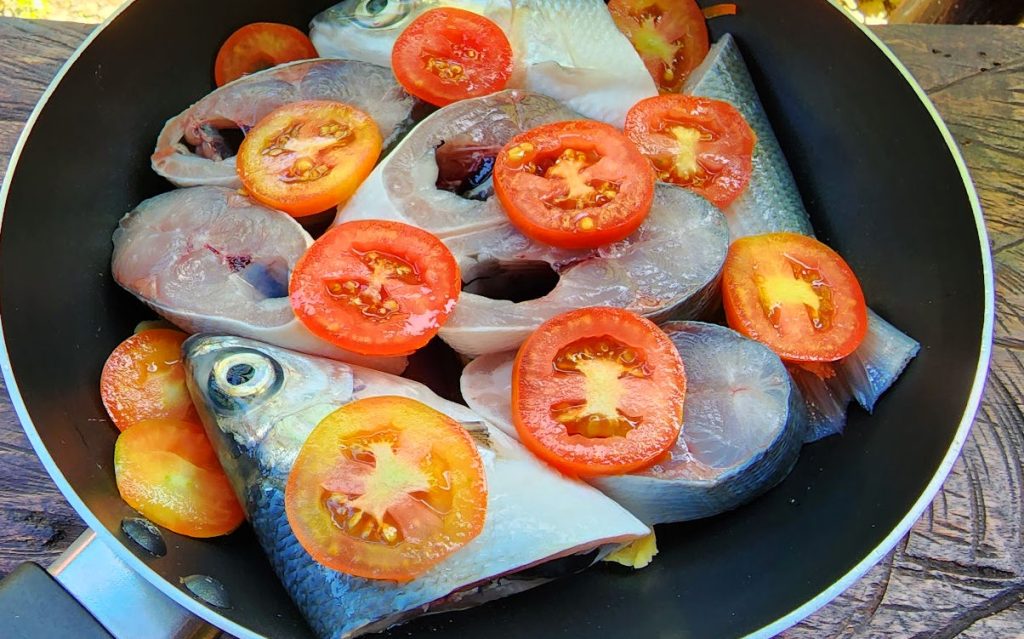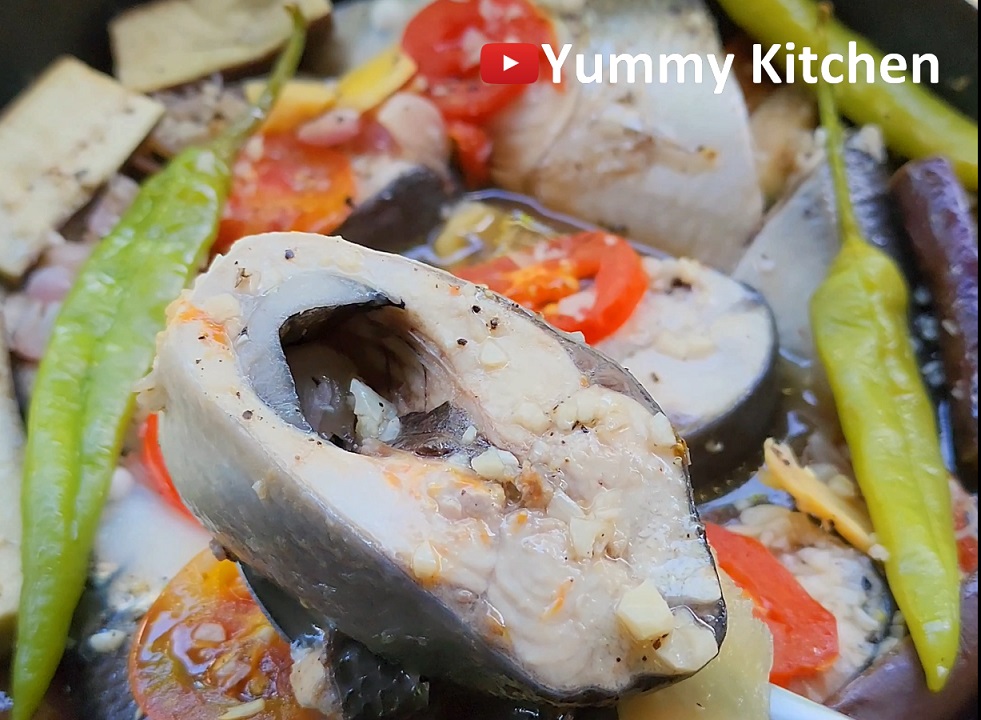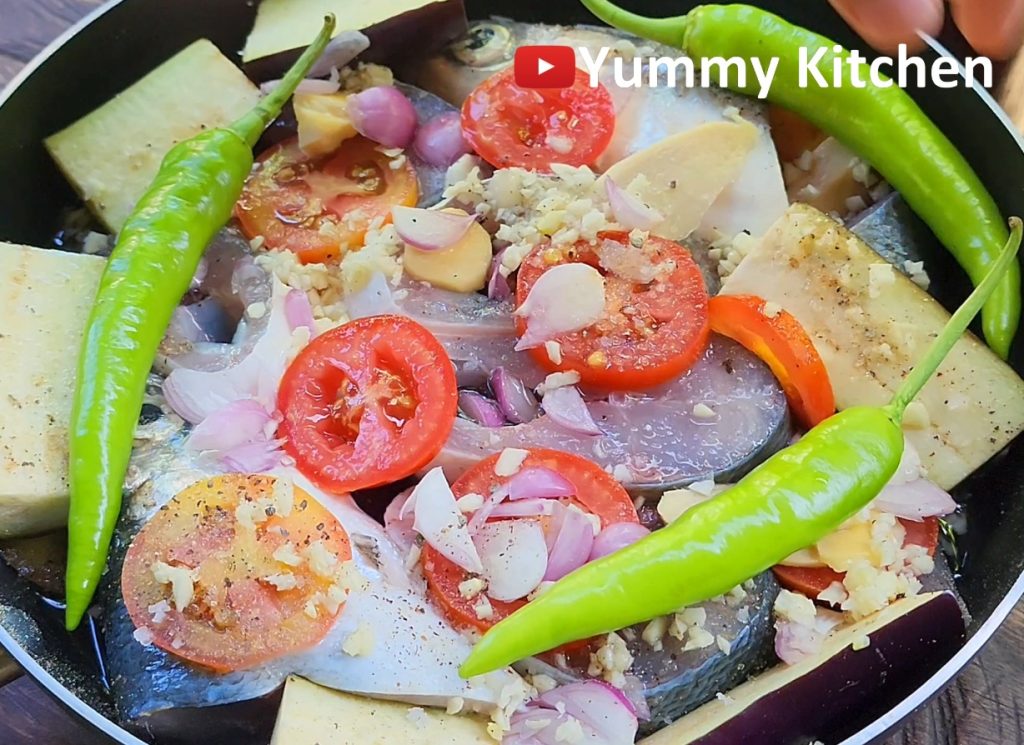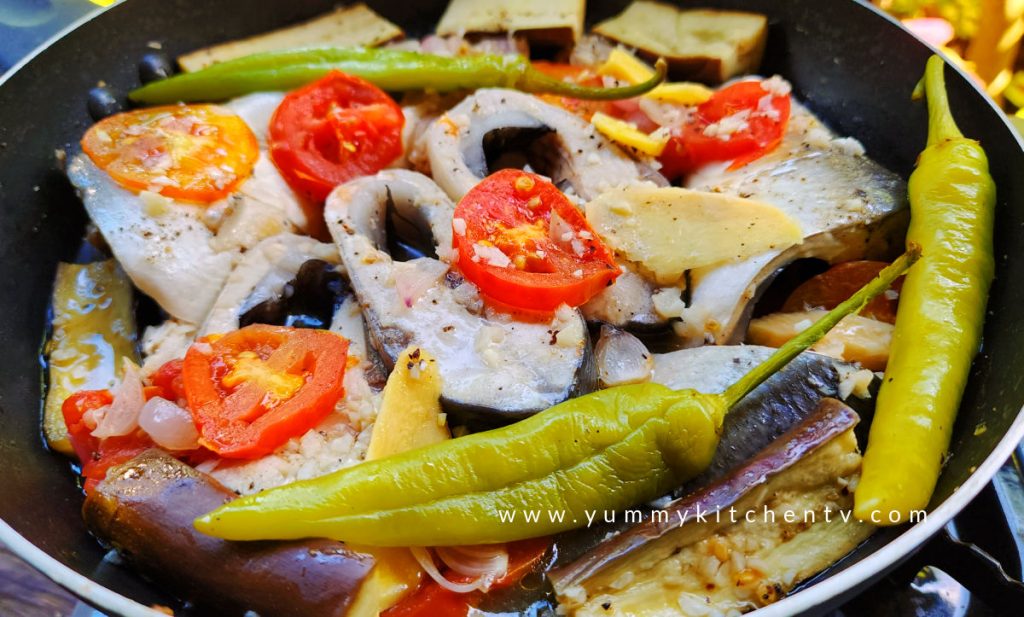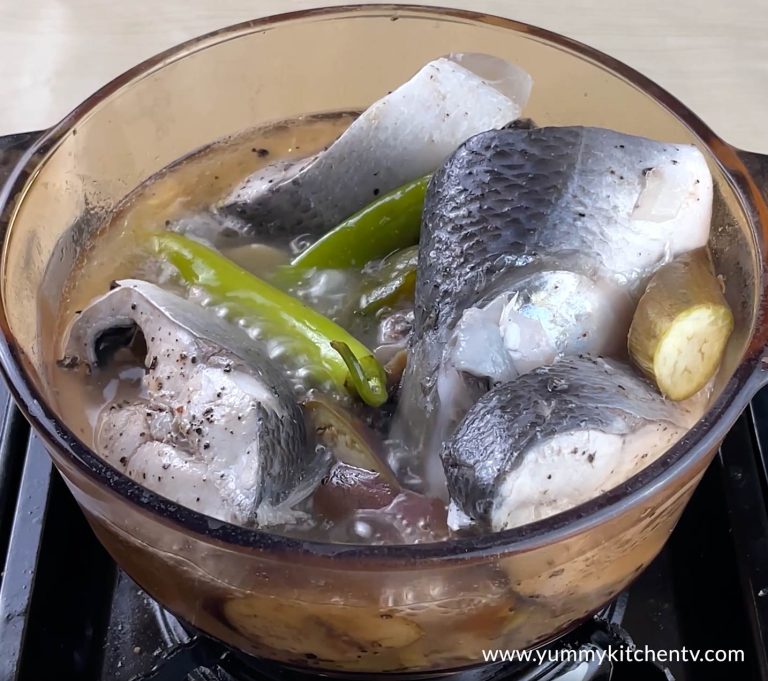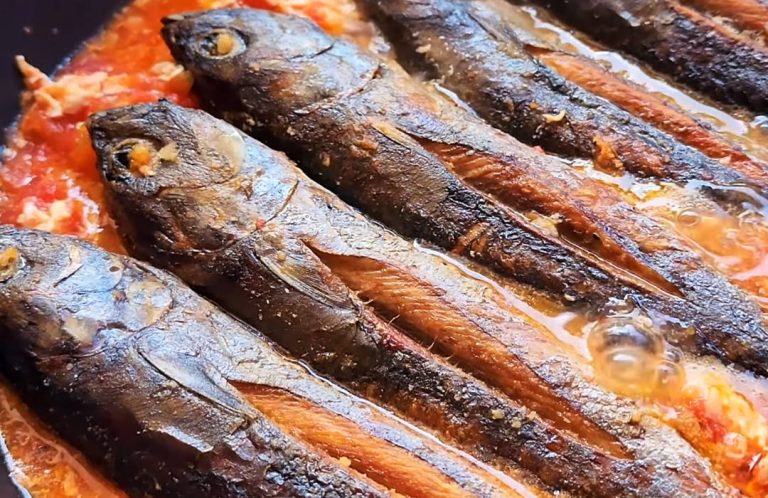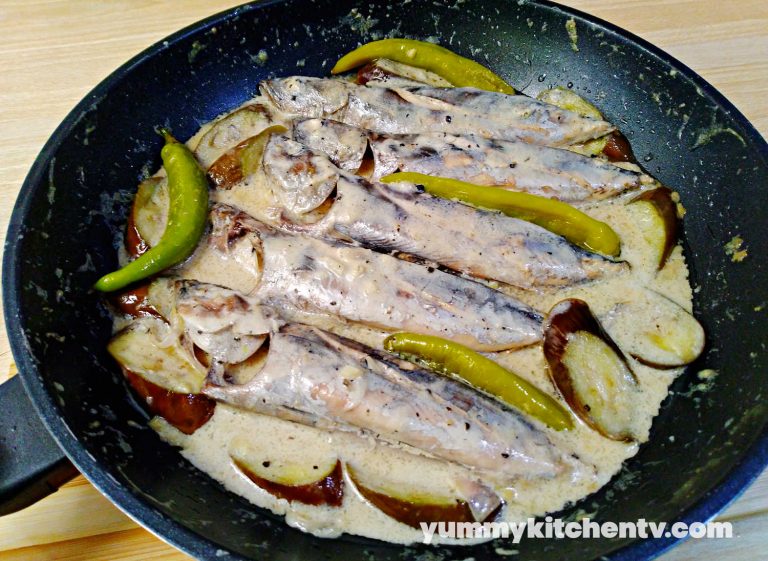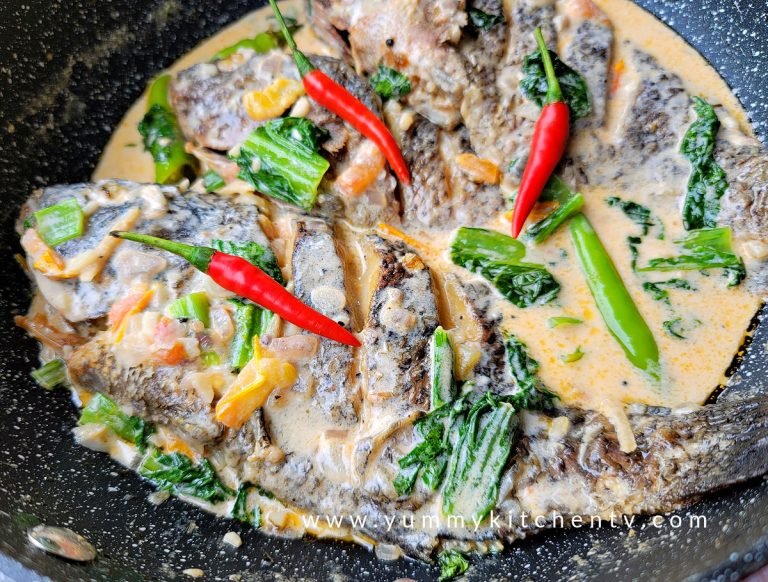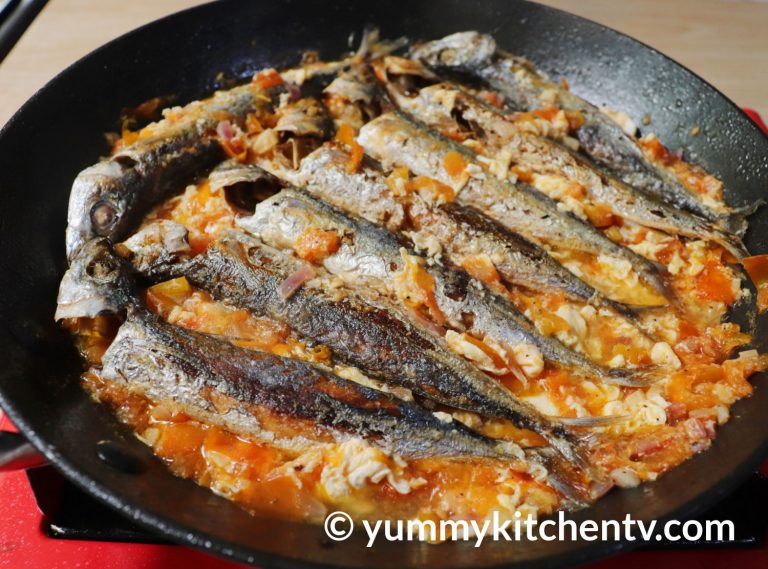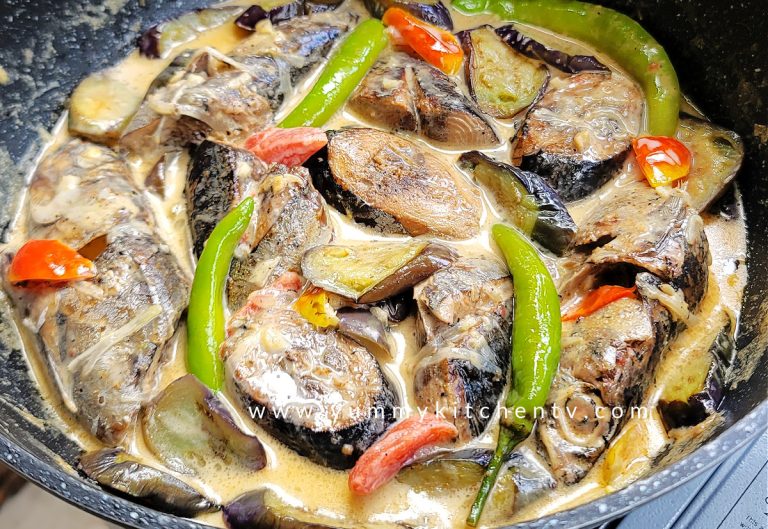Paksiw na Bangus
Paksiw na Bangus is a sour savoury stew made with fresh slices of milkfish simmered in a sour broth made with eggplant and tomatoes along with vinegar, garlic, onion, ginger, green chilies, oil, salt and pepper. The paksiw is a classic Filipino dish which means “to cook and simmer with vinegar, garlic and salt”. While there are a lot of souring agents available out there, nothing can truly beat the original savour brought by the vinegar. With the sour and savoury flavour with a hint of tangy but subtle spice, the paksiw na bangus is best paired with hot steamed rice and best eaten during the cold season. Sabaw palang, ulam na! Yum!
Paksiw na Bangus Recipe
Ingredients:
- 1 kilo bangus (milkfish)
- 5 pieces tomatoes
- 1 large eggplant
- 5 cloves of garlic (sliced)
- 1 medium onion (sliced)
- 1 thumbsize ginger (sliced)
- salt to taste
- black pepper to taste
- ¼ cup vinegar
- 1 cup water
- 3 pieces green chilies
- 2 tablespoons cooking oil
Directions:
- Wash the tomatoes and slice them into thin circles. Slice the ginger into thin chunks. Remove the ends of the eggplant, slice them horizontally in the middle and the slice into smaller pieces. Wash and prepare the milkfish. Slice them into serving pieces. Set aside.
- Grab a flat pan and arrange the ingredients. Make alternating layers of aromatics and milkfish. Sprinkle some salt and black pepper. Add a little sugar to balance the taste. Then, pour the vinegar and a cup of water. Add the long green chilies on top.
- Cover the pot and let it simmer for 15 to 20 minutes using medium heat.
- Pour some of the sauce over the milkfish to cook them thoroughly and evenly. Add the cooking oil. Cover the pot and allow it to simmer again for a few minutes before turning the heat off.
- Transfer the paksiw na bangus to a large serving bowl. Enjoy this with a big bowl of hot steaming rice. Yum!
What is Vinegar
Vinegar is the key ingredient in making any paksiw dish. While we know that vinegar is one of the most common condiments, I bet you did not know how vinegar is made. The commercially available vinegar is now made with acetic acid and water since they are much economical, but did you know that natural vinegar can be made from fruits, sugarcane and even rice?
Natural vinegars are made with the long process of fermentation. Fun fact: If you over process a vinegar, it can result to an alcoholic beverage!
While there are a lot of different types of vinegar, the simple vinegar made with acetic acid is already enough to make you a sumptous dish of paksiw on your table.
What is Paksiw?
A paksiw is a classic Filipino dish which is characterized with its vinegar broth. The term “paksiw” came from the Visayan verb “un-un” or “un-on”,which means to “stew with vinegar, salt, and spices.”. The natural acidity of the vinegar is well balanced by the fruity sourness and sweetness of the tomatoes.
Hearing the vinegar, one may think that a vinegar broth is too strong and might give you a stomache ache, the true flavor of a paksiw dish will simply give you asim kilig! The paksiw’s broth is so much mellow than what you think.
According to history, the paksiw as a dish can be traced back from the Chinese and Spaniards who visited our country long before. The way of cooking with vinegars were associated in prolonging the life of dishes, especially when brought into voyages.
On the modern day, we Filipinos enjoy paksiw dishes in our daily lives.
Paksiw na Bangus
Pasko, paksiw, pasko, paksiw!
As Pinoys, we always joke about the Christmas and New Year’s handa being reheated all over again. Even our family, a week after the holidays, our spaghetti remains undefeated. Our lechon became lechon kawali, and a few days ago, it already transformed into lechon paksiw. And take note, we still have ready to cook lumpia which are still waiting to be cooked! While we take these holiday celebrations too seriously, we often feel the umay after eating the same set of food after a while. And often, what remained where the oily and fried foods.
Fun Fact: Did you know that according to Science, acidity can help counteract the umay from oily and fatty foods? Lets take lechon for example. Lechon is better with suka which is sour than with soy sauce which is salty.
Since most of us are having taste fatigue from these holiday foods, let’s shift our diet with something not just sour but also healthy! Every after large celebrations, I made sure to prepare a paksiw dish for the whole family. This dish can instantly take away all the umay and help us kickstart our healthy diet goals for the new year.
With the acidity kontra action of the paksiw and its steamy and sour hot broth, the paksiw dish is truly a perfect dish anytime of the year! While you can make any type of meat into a paksiw dish, one of my personal fave is the paksiw na bangus. Not only because the tenderness and mild flavor of the fish, but also because of its natural ocean taste which pairs perfectly with the sour vinegar broth.
If you wanna know how to make paksiw na bangus, read and follow the simple recipe below. Yum!
How to Cook Paksiw na Bangus
Preparing paksiw na bangus is not just easy but also fun to make. Unlike other savoury dishes which usually starts with sauteing the aromatics, preparing the paksiw na bangus is much easier. You only need to arrange all the ingredients in a large pot, add some water to make the broth and them let the ingredients come together into one amazing dish.
When I make my paksiw, I always arrange them in alternating layers. My lola really got curious on why I do this, since she was the one who taught me how to make paskiw and she never told me to do that. But let me tell you, I have a really good reason for that. Since the paksiw will be left simmering for quite a few hours and you cannot stir them a lot of times because the bangus might crumble, arranging the ingredients alternately will distribute the flavors on all layers as the boiling water circulates among them. No stirring, no stress! Just make sure to still check the bottom part as they might still burn.
Paano Magluto ng Paksiw na Bangus
Mga Sangkap:
- 1 kilo bangus
- 5 pirasong kamatis
- 1 mahabang talong
- 5 butil ng bawang (hiniwa)
- 1 sibuyas (hiniwa)
- 1 luya (hiniwa)
- asin
- paminta
- ¼ tasang suka
- 1 tasang tubig
- 3 pirasong siling haba
- 2 kutsarang mantika
Paano Lutuin:
- Hugasan ang mga kamatis at hiwain ito ng medyo maninipis. Hiwain ang luya ng maninipis na chunks. Alisin ang mga dulo ng talong at hiwain ito ng pahaba, saka hiwain ng mas maliliit na pirasp. Hugasan na rin ang bangus at hiwain ito ng mas maliliit na piraso. Isantabi.
- Kumuha ng flat na kawali at iayos dito ang mga ingredients. Gumawa ng layers ng bangus at iba pang ingredients. Budburan ito ng konting asin at paminta. Maglagay rin ng konting asukal para mabalanse ang lasa. Sunod na ibuhos ang suka at maglagay ng konting tubig. Huling ilagay ang mga siling haba sa ibabaw.
- Takpan ang kawali at hayaan itong maluto ng 15 – 20 minuto gamit ang katamtamang apoy.
- Buhus-buhusan ng sabaw ang bangus para maging pantay ang luto. Maglagay ng konting mantika at takpan ulit ng kawali. Pagkatapos ng ilang minuto, patayin ang apoy.
- Ilipat ang paksiw na bangus sa malaking serving bowl. Ihain ito kasama ng malaking bowl ng mainit na kanin. Yum!
- Transfer the paksiw na bangus to a large serving bowl. Enjoy this with a big bowl of hot steaming rice. Yum!


